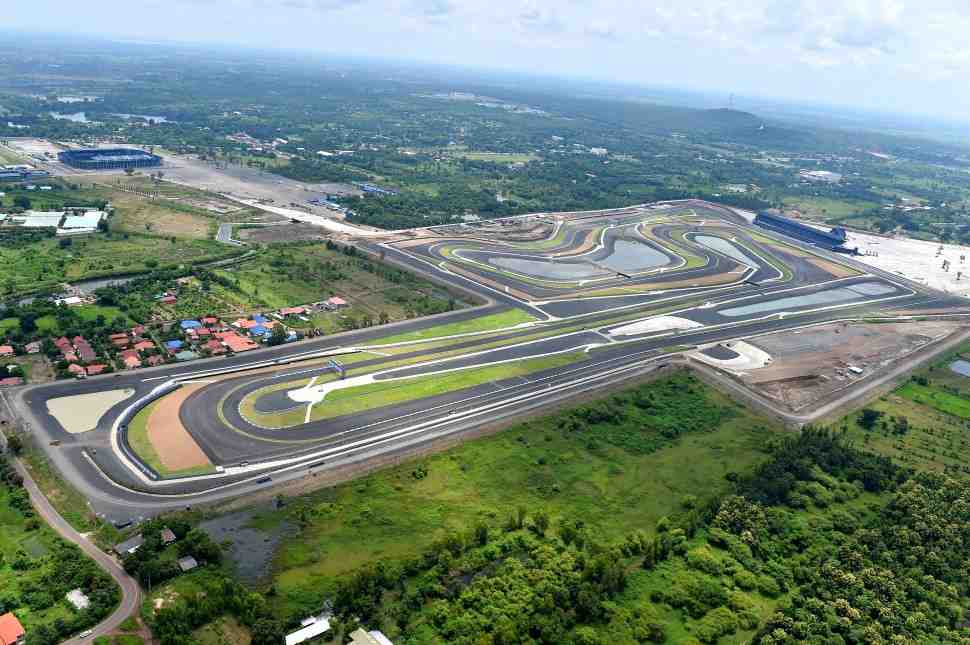Cycle News In The Paddock
COLUMN
Tales of the Unexpected
MotoGP’s return to the flyaways has been a breath of fresh air. For the fans in Asia and Australia, obviously, but also for the GP circus. After a couple of seasons of restriction and over-familiarity, where they even sometimes raced at the same circuit two weekends in a row, it’s the joy of the unexpected.
Four tracks are back after two years away: Motegi, Buriram, Phillip Island and Sepang. Tracks not unfamiliar to the old hands, though there are plenty of Moto3 and even Moto2 runners who have never seen any of these circuits before, except on TV or PlayStation. Old hands know that, especially with Phillip Island, they are in for a treat. At the other flyaway tracks, not quite so much perhaps, but they all pose interesting puzzles anyway, from stop-and-go Motegi and Buriram (pictured below) to stop-and-flow Sepang.

There are also what you might call class-circuit rookies: riders who have never ridden these tracks in their current class. In MotoGP, these include not only the true rookies—Darryn Binder, Gardner, Di Giannantonio, Bezzecchi and Fernandez—but also four-times 2022 winner Bastianini, bruiser Jorge Martin, Sunday charger Brad Binder and the improvingly solid Luca Marini, as well as Alex Marquez.
These will have to remember their way around the tracks on their Moto2 bikes, and then forget all about gear settings, braking points and corner lines to adapt to MotoGP.
Even for the old hands, however, there is still plenty to get used to. Restrictive tech regs notwithstanding, the bikes have changed very significantly since 2019. Much of the old data will no longer be exactly relevant.
This is thanks to the usual evolutionary development, despite a couple of years of engine freezing during the pandemic, but also to some major changes to ancillary equipment and their effects on the details of riding on the giddy limit.
In aerodynamics, Ducati’s “spoon” ahead of the rear wheel had already been introduced and universally copied during 2019 (initial joint protests having been unsuccessful). There is still argument over whether this is of greater effect on downforce or tire cooling, but it is no longer relevant.
Since then, there have been big strides in bodywork, not only in general refinement but in specific work on making the fairing sides add downforce. Ducati does it with ducts; Aprilia more recently with a simple fairing-flank bulge understood to play with ground-force aerodynamics at high lean angles.
More obvious, another 2022 innovation, Ducati’s ridged double pairs of tail fins on the seat hump, aptly dubbed “stegosaurus,” said to add a measure of stability under braking—as well as an extra degree of difficulty for riders swinging their leg over the bike when mounting or dismounting. These first appeared at Silverstone in August. Four races later Suzuki introduced a pair of copycat floppy puppy ears at Motegi. Can the others be far behind?
And most of all, active shape-shifting rear-squatting front-bowing suspension. In 2019, Ducati was experimenting with it on the rear, only with Jack Miller. Since then, everybody has it and not just off the start line. It is common practice for a rider-controlled process to squat the rear on corner exits, lowering the center of gravity to reduce wheelies. Development of similar active equipment for the front, with Ducati having started to experiment, has been outlawed.
Add it all together, and it has quite an effect. Especially on Michelin’s front tire, which has been giving all riders (not just Quartararo) problems with gaining heat and pressure under the extra stress of the downforce at speed and the much harder braking that comes with it. A revised tire is promised for next year.
Most importantly, it has made the bikes faster.
Marc Marquez (and welcome back to him, as well) summed it up neatly at Motegi, a circuit of straights and U-bends where heavy braking and acceleration are at a premium. The track had become, he said, “narrower and shorter.”
But faster? Funnily enough, this is not as straightforward a question as you might think. Bad weather meant it was impossible to answer at Buriram. In Japan, runaway Motegi winner Jack Miller did beat the race lap record, by less than two-tenths, but his 1:45.198 was still 1.4 seconds off Jorge Lorenzo’s all-time best lap, set on a Yamaha for pole position way back in 2015. Qualifying was wet, but the best free practice time (also Miller) was still seven-tenths short of Lorenzo’s best.
More significantly, though, the race time was 12 seconds faster than in 2019, and more than five seconds faster than the previous best, set by Marquez in 2016.
What will happen at Phillip Island? At Sepang? Well, faster is good, but “narrower” will make challenging circuits even harder. Properly difficult grand prix racing, then. CN
Click here to read the In The Paddock Column in the Cycle News Digital Edition Magazine.
Click here for all the latest MotoGP news.
